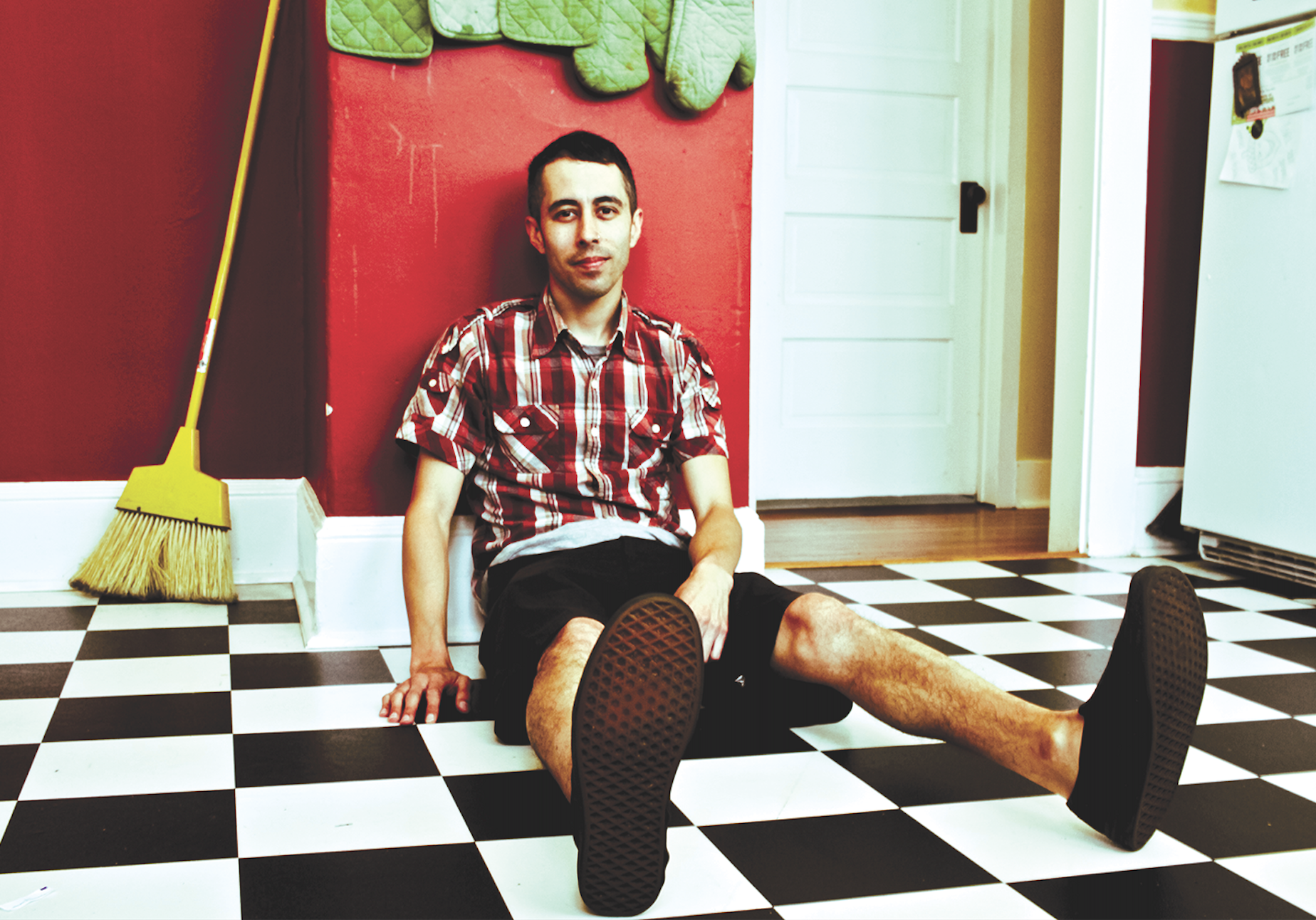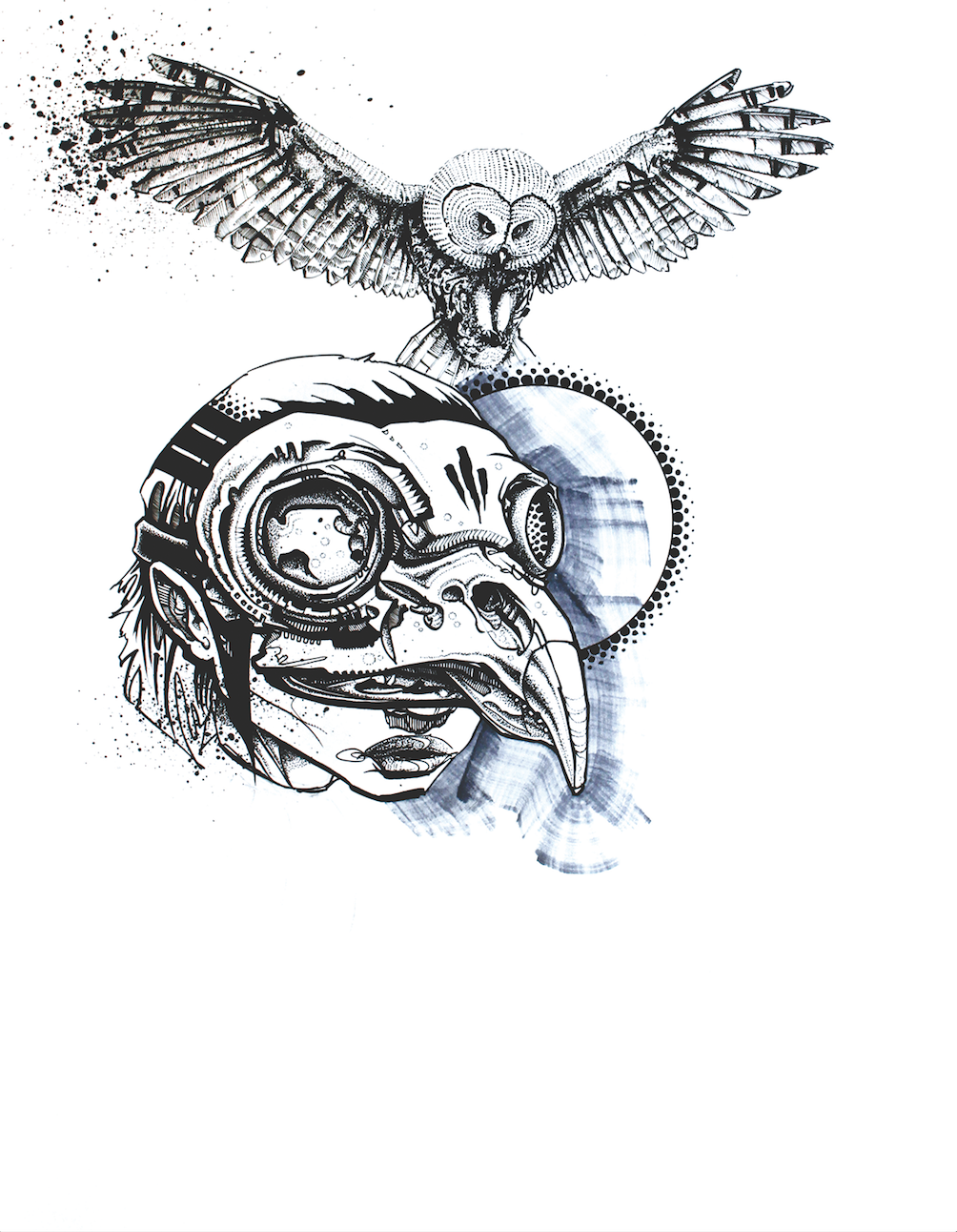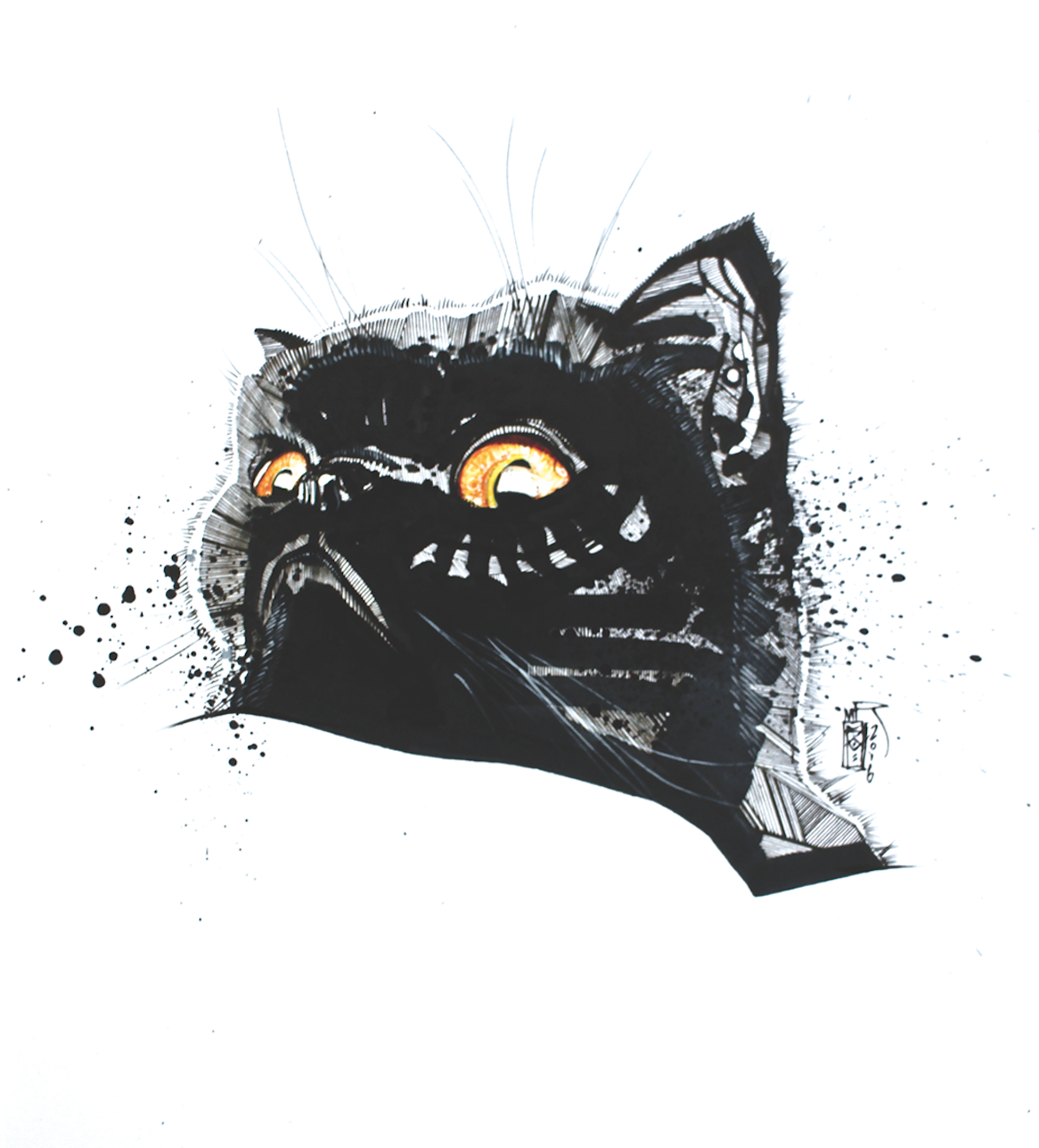Portland Street Artist mr SAY


Etched into the careful lines of whatever becomes the subject matter of his new piece, the Portland artist known only as mr Say makes a genuine visual reflection on saying exactly what he means to say about the topic of his pieces. Here is an artist unafraid to make a statement on the hum-drum glum of everyday chum and also spell out the beauty of the perfect lines that comprise nature. Come take a look at his latest original pieces at Green State Collective gallery in Gresham, or check out some of his sketches for a possible new tattoo at the House of Tattoo.
ELEVEN: What type of artistic career path has led you to the work you are doing now?
mr SAY: I was originally on a path toward tattoo artistry. About eight years ago I decided to pursue fine art, got more into the sticker scene, street art, making pen and ink illustrations and traveling around doing life paintings, murals and illustrations. I have also worked in the restaurant industry for years. When my old tattoo teacher came by and bought a couple of my illustrations, he encouraged me to come back and finish my apprenticeship for tattoo, that’s why I got back into completing my tattoo certification at the House of Tattoo. So far I have gotten a pretty good response, and will be doing my practical work starting in September. I am already booked out with clients throughout that time. It’s been challenging to dumb down my detail and style of art a little bit to adapt it more for tattooing.
11: How does being self-taught distinguish you from other artists?
MS: I’ve had to pick up a lot of the business aspects of the art scene from my friends, and official school would have helped me to learn that. I think it’s possible to learn traditional techniques at school, but developing a personal style comes from repetition and motivation. I think that art institutes are a joke because especially now, they are too overpriced. A lot of the artist friends I’ve had went to school for things like toy design, or graphic-related design but who then actually go on to not use their degrees in that way and who actually just end up doing visual art instead.
11: What got you into street art and the style of art you make now?
MS: My cousin was a graph writer in the early ’90s in California and I used to live with him, which got me a little into this art scene back in fifth grade. I draw huge influence from the comic book scene and a lot of my style comes from there. Michael Turner, for example, and the comic work that he did in Witchblade and Fathom, and the work he did for Image comics or Top Cow. Also, Nate Van Dyke who is a part of Upper Playground and Zerofriends. I got to do a mural show with Nate back in 2008 in Orlando, and he showed me several illustration techniques.

11: What about the stickers that you make?
MS: It’s much easier to be able to work on art in the studio and then have it available to be put up or have friends put it up, because it’s harder to pinpoint the finger of blame as to who did it. The priority stickers with the blue tops started in the graffiti scene because they were the easiest way to get free stickers and the ones with the blue top have a huge historical significance in the graffiti scene. Most of the time artists would use them as tags to put up. The blue tops stopped being made in 2006 and are now out of print. Since the Postal Service company recognized how these stickers have caught on in the street arts scene, the newer priority mail stickers that come out every year have weaker and weaker adhesive. The old blue top stickers had great adhesive and lots of white space for drawing art, now even the amount of white space on the newer stickers has lessened.
11: Why is it important for communities to have street art visible?
MS: It just makes neighborhoods more interesting. When I’ve traveled to cities that have no street art and all you can see is concrete, it’s very boring. It’s not ’til the last five years in Portland that it has become a lot easier to make murals in public spaces. Permits are more affordable, and there are routes that allow for there to be funding that help the process along. Now there is an organization called the Portland Street Art Alliance and a non-profit called Forest for the Trees who put on a huge annual mural festival, and both organizations aim to bring contemporary art into community settings.
11: Why is it important to you to be able to travel?
MS: I really like networking with other artists, trading art for a place to crash and being able to collaborate. Two years ago I traveled through Florida for six months. Originally I was planning to see a cousin, but from there I made my way to the [St. Petersburg] area. The St. Pete downtown scene reminds me of Portland about ten years ago, and their mural laws are very lax so you can easily put up murals. They have a mural festival called Shine On that pulls in international artists to make murals for their community. I think it is fun to collaborate and network with other artists because everyone has different strengths, so it is incredible to be able to vibe off of other artists.
11: It seems crazy how there is art that some will pay millions of dollars to put up while there is other art that can be seen as illegal. Do you have any thoughts on the legality of what art is or is not allowed to be up?

MS: I remember when I was asked to do jury duty once, and the lady next to me asked me what I was doing, so we talked a little about the scene and she later said she’d like to exchange information and asked me about possibly doing an interview for a commission piece on my work. About a month later she emailed me and told me about how Kerri Tomlinson was really interested in doing an interview for Channel 2 News and would like to do a report on the sticker scene in Portland. She came by the studio later and was really supportive in her questions. Unfortunately, when she brought the piece to her editor, he told her she wouldn’t be allowed to promote street art. He made her flip it and make it into a negative piece. During her whole report though, she kept sneaking in hints that helped to show how people could get into the art scene and helped to promote the work without making any blatant statements in that direction. Certainly there were no hard feelings, because I understand how that goes, and I knew she wouldn’t be able to make a positive piece about basically illegal art in Portland. As far as public art goes, I think that all the backs of signs should be fair game. If you are a taxpaying citizen in society, you are paying for the signs and you should be able to decorate those spaces. They don’t have a city funded graffiti clean-up crew, the Portland graffiti clean-up is based out of Gresham, and it is comprised of volunteer and church led groups that pick specific days to clean up the backs of signs. This is ironic as well because since they also do not have the authority to be doing this work, they really could cause more damage trying to remove the art to the sign than we create when adding on stickers. When I was more prolific in the street art scene, we would map out and plan the days that they posted to clean up signs so we would know when the signs were clean and ready for more art to be added. Since I do art shows and have to show my face a lot I am no longer active in the street art scene, sometimes I do things when I travel but unfortunately I can no longer do that around Portland.
11: Tell us about your current work around town.
MS: My friend just opened a gallery on main street in Gresham that has a lot of my framed illustrations and paintings up, called Green State Collective, and I may later also be showing my work at the Oregon’s Finest as well. I’ve been doing the gallery scene as long as I have the street art scene, but it can be hard for me to make a body of art that is cohesive, because I tend to be more sporadic in my work and make kind of whatever I feel like that day. The styles are cohesive but the content can be drawn from whatever inspired me that day, interactions I’ve had at work or with people I may have just met that day on the street. I’ve even done things where I make pieces off of little sayings, like fortune cookies, and I’ve made illustrations inspired by those. I also draw characters from an app I have for artists called SKTCHY, where people upload photos of themselves which are basically selfies that allow artists to use them as subjects for their artwork. »
– Lucia Ondruskova



